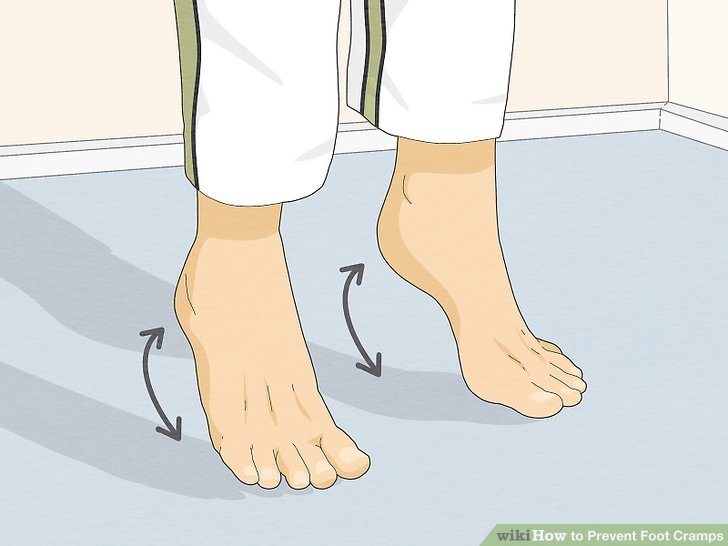How To Prevent Foot Cramps

Foot cramps, those sudden, painful contractions of the muscles in the feet, can be a real nuisance, interrupting daily activities and disrupting sleep. While they can affect anyone, some individuals are more prone to experiencing foot cramps due to various factors such as exercise, medical conditions, or nutritional deficiencies. The good news is that there are several strategies that can help prevent foot cramps, and understanding these can lead to significant relief for those who suffer from them.
Understanding Foot Cramps
Before diving into the preventive measures, it’s essential to understand what foot cramps are and what causes them. Foot cramps are involuntary contractions of the muscles in the foot, which can cause severe pain. They can be triggered by a variety of factors, including dehydration, overuse or strain of the foot muscles, medical conditions such as hypothyroidism, or deficiencies in essential nutrients like potassium, calcium, and magnesium.
Dietary Adjustments
One of the critical approaches to preventing foot cramps is through dietary adjustments. Ensuring that you have a balanced intake of essential nutrients can help mitigate the risk of foot cramps. Here are some key dietary considerations:
- Potassium-rich foods: Include foods rich in potassium in your diet, such as bananas, avocados, and spinach. Potassium helps regulate fluid balance and nerve function, which can reduce the risk of muscle cramps.
- Calcium intake: Adequate calcium intake is crucial for muscle function. Dairy products, leafy greens, and fortified foods are excellent sources of calcium.
- Magnesium: Magnesium plays a vital role in muscle contraction and relaxation. Incorporate magnesium-rich foods like dark chocolate, nuts, and whole grains into your diet.
Hydration
Hydration is another key factor in preventing foot cramps. Dehydration can lead to an imbalance of electrolytes, which are crucial for nerve and muscle function. Drinking enough water throughout the day, especially during and after physical activity, can help maintain the balance of fluids and electrolytes in the body.
Exercise and Stretching
Regular exercise and stretching can also help prevent foot cramps by strengthening the muscles and improving flexibility. Here are some exercises and stretches that can be particularly beneficial:
- Toe stretches: Simple toe stretches, such as wiggling your toes and curling them under, can help loosen the muscles and tendons in the feet.
- Foot rolls: Rolling a tennis ball or a foot roller under the foot can help relax the muscles and improve circulation.
- Calf stretches: Since the muscles in the calf are connected to the foot, stretching the calf muscles can also help reduce tension in the feet.
Lifestyle Changes
In addition to dietary adjustments and exercise, making a few lifestyle changes can also contribute to preventing foot cramps:
- Wear comfortable shoes: Wearing shoes that fit well and provide adequate support can reduce strain on the foot muscles.
- Manage weight: Excess weight can put additional strain on the feet, increasing the risk of foot cramps. Maintaining a healthy weight through a combination of diet and exercise can help alleviate this strain.
- Avoid overexertion: Gradually increasing the intensity and duration of physical activity can help prevent overexertion, which can lead to foot cramps.
Medical Considerations
For some individuals, foot cramps may be a symptom of an underlying medical condition. If foot cramps are frequent, severe, or persistent, it’s essential to consult with a healthcare provider to rule out any underlying conditions that may need medical attention.
FAQ Section
What are the most common causes of foot cramps?
+Foot cramps can be caused by a variety of factors including dehydration, overuse or strain of the foot muscles, nutritional deficiencies (particularly of potassium, calcium, and magnesium), and certain medical conditions.
How can I relieve a foot cramp that has already started?
+To relieve a foot cramp, try stretching the affected muscle. For example, if the cramp is in the arch of the foot, try stretching the toes back towards the shin. Applying heat or cold packs can also provide relief. In some cases, taking an over-the-counter pain reliever may help, but it's always best to consult with a healthcare provider before taking any medication.
Can foot cramps be a sign of a more serious health issue?
+Yes, while most foot cramps are not a cause for concern, frequent, severe, or persistent foot cramps could be a sign of an underlying health issue. Conditions such as hypothyroidism, peripheral neuropathy, or certain electrolyte imbalances can cause foot cramps. If you're experiencing foot cramps regularly, it's a good idea to consult with a healthcare provider to rule out any underlying conditions.
Conclusion
Preventing foot cramps involves a multi-faceted approach that includes dietary adjustments, staying hydrated, engaging in regular exercise and stretching, and making certain lifestyle changes. By understanding the causes of foot cramps and implementing these preventive measures, individuals can significantly reduce their occurrence and enjoy better foot health. Whether through incorporating potassium-rich foods into your diet, wearing comfortable shoes, or taking regular breaks to stretch during long periods of physical activity, there are numerous strategies that can help prevent foot cramps and alleviate the discomfort they cause.